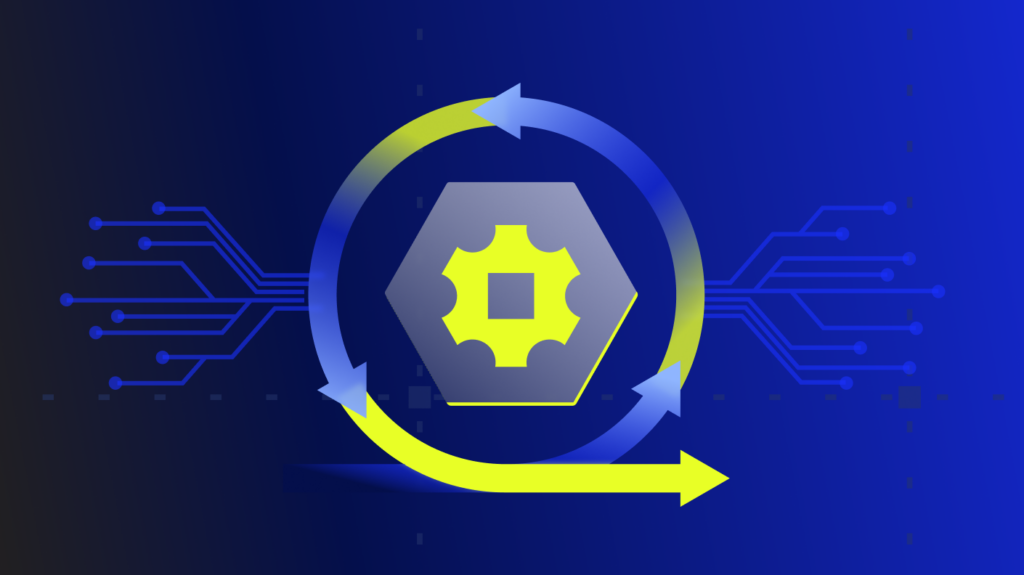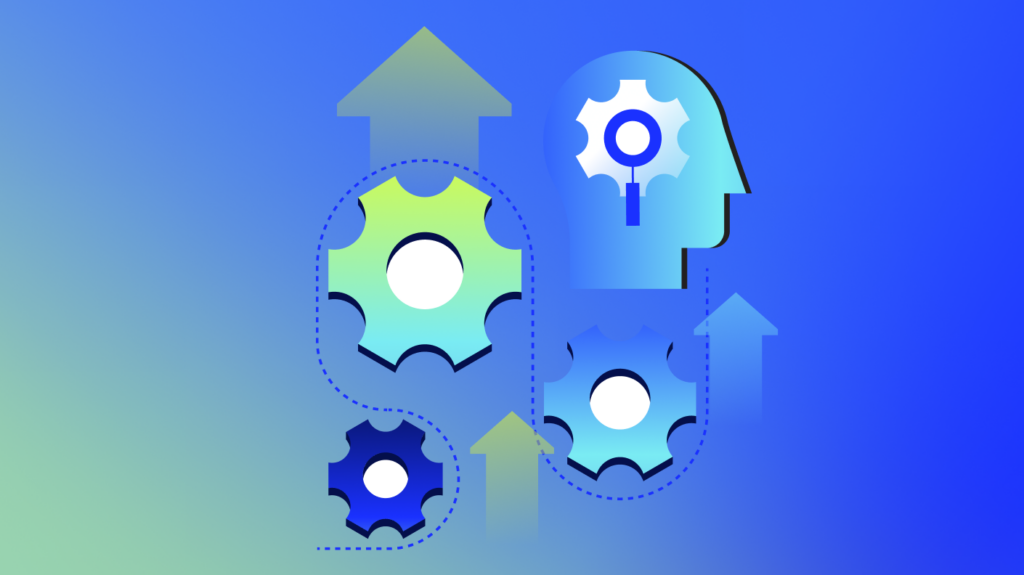Software companies face more challenges than ever before to keep pace in an ever-evolving industry that requires innovation and reliability. The pressure to adapt to fast-moving and sophisticated technologies can easily create silos amongst teams and a lack of visibility within organizations.
With legacy technology stacks and systems now in the rearview mirror, the focus of large-scale software development has shifted to ensuring standardization and distributed computing in a growingly serverless world.
IT infrastructure monitoring allows software businesses to stay ahead of technology trends, face common challenges with intelligence and agility and help them become more successful.
Trends in Software
Cloud-First Focus
With hybrid work and work from home becoming the norm, software companies remain focused on either shifting to public clouds and/or becoming hybrid and needing to bridge both worlds. Software companies need to adapt to high-speed connectivity and secure systems along with large volumes of data that require serious computing power. Continuing to move to a cloud-first strategy drives improvements in agility but inevitably brings about challenges with security.
Converged Platform for ITOps and DevOps
Traditionally, ITOps are not equipped as the first line of defense without a view into the application. But as businesses migrate to the cloud, IT teams face too many unknowns across the application and infrastructure layer. IT teams need observability into modern applications for context on how to partner where businesses are going.
ITOps and DevOps now require a single view of application services and infrastructure so they can be equipped with the right observability solution to ensure stable cloud and container infrastructure for modern apps. Access to the right solution to see data for basic troubleshooting and bottlenecks drives business outcomes forward and emphasizes the user experience.
Adoption of CI/CD
While the software development industry is one of the most competitive in the world, companies are racing to create the best customer experience and meet the demand for their services faster than ever before.
Continuous Integration (CI) and Continuous Delivery (CD) allow organizations and teams to facilitate an effective process for getting products to market at speed, continuously delivering code into production, and ensuring an ongoing flow of new features and bug fixes via the most efficient delivery method.Whether it’s to improve development, operations, or security, CI/CD pipelines give engineers and teams more time to work on things that matter and less time struggling with the risk, standards, and velocity of deployments
Emphasis on UX
As digital services become the norm, user experience is everything; slow or buggy applications or online services risk losing customers. Ease of use, aesthetic, and intuitive interfaces are more important than ever in an era of global competition.
With graceful and seamless functionality throughout your UX, you can be sure to hold your user’s attention and satisfaction in the long run. The quicker your user can interact with your application and find it easy to operate, the chances of them being satisfied and coming back increases exponentially.
Challenges Faced by Software Companies
Serverless Adds More Complexities to Monitoring
Monitoring serverless (such as AWS Lambda) without sufficient change detection and modern solutions is unmanageable and difficult due to their ephemeral and dynamic nature. Insight is key and the main driver for continuous changes and improvements. A common stumbling block for anyone new to serverless infrastructure is the lack of visibility, or rather the seemingly reduced visibility compared to what they were used to before.
With serverless comes the design for distributed computing, where components are shared among multiple computers to enable greater efficiency and performance. The challenge comes from creating a balance of granular functions for high performance but not too many to make it unmanageable in the long term. Another consideration is to ensure that the functions aren’t so high level or broad that their very benefit is eliminated. Instead, you simply have multiple mini monoliths to contend with.
Lack of True Visibility into Dynamic Systems
A broader breadth of coverage from monitoring and management solutions is essential, especially as software organizations leverage new technologies. IT teams encounter fractured visibility as their footprint expands, through both mergers and acquisitions, and organically.
Traditionally, answering basic questions about infrastructure health is time-consuming and requires tribal knowledge or multiple solutions. Ops teams struggle to agree on a “single source of truth” for infrastructure health and performance data which leads to inefficient processes and high MTTR.
Executives require high-level, aggregated performance dashboards to visualize mission-critical performance metrics. Executives require immediate access to relevant performance metrics, whether at the service, application, or data center level so that they can make intelligent and informed decisions to manage their business.
Standardized Monitoring Across Organizations
Often, software companies lack adoption across new or multiple monitoring platform(s) as historical or institutional knowledge to learn from previous actions is not recorded. New and more junior teams find modern IT environments overwhelming and are not trained on how to properly communicate insights from monitoring solutions.
Acquisitions require integrating large infrastructures with existing environments and result in limited IT staff or over-spending on staff to accommodate financial regulations, resource retraining, and process redesign required to pivot to new technology platforms. IT resources spend too much time focusing on day-to-day monitoring challenges and limited time innovating and driving progress in any digital transformation adoption.
Distributed Engineering Teams
Lack of application visibility creates functional gaps between DevOps and ITOps. As businesses migrate to the cloud, IT faces too many unknowns across the application and infrastructure layer. IT needs observability into modern applications for context on how to partner where businesses are going.
Power users and app developers cannot go deep for real-time analysis of every end-user operation and the relationships with the infrastructure component due to granular role-based access controls for different user types and by organizational boundaries. These data and user silos contribute to business downtime; teams typically troubleshoot problems in isolation within silos.
LogicMonitor Solution for Software Companies
Helping Businesses Drive Innovation
LogicMonitor provides comprehensive visibility into dynamic IT environments for your networks, cloud, applications, servers, log data, and more. Data correlation provides insights for intelligent troubleshooting and predicting bottlenecks to scale IT investments and control operational costs for maximum enterprise productivity.
Extensive Breadth of Coverage Across Complex IT Infrastructure
LogicMonitor’s agentless approach delivers an extensible solution with over 2,000 workflow and ecosystem integrations and unlimited dashboards. Automated discovery of new devices paired with intelligent alerting maximizes infrastructure health and performance by providing automated resolutions for Ops teams. Monitor resource utilization, network usage and performance, and other critical infrastructure metrics with support for:
- Networks and networking gear
- Cloud and container resources
- Servers, storage, and databases
- Websites and synthetic transactions
- SaaS services essential for remote work
- Applications, IoT devices, and more
Rapid and Automatic Deployment and Configuration for Efficient Monitoring
Get the answers you need to solve problems faster with LogicMonitor’s fully automated platform. Our agentless collectors automatically discover, map, and set baselines for complex and distributed infrastructure in a matter of minutes. Put the manual configuration and expensive hardware behind you with monitoring built for the modern age.
Visibility for ITOps and DevOps to Partner in Business Modernization
LogicMonitor eliminates application and information silos between ITOps and DevOps and prevents context switching with a single view of application services, performance, and infrastructure. Execute and achieve digital transformation initiatives by empowering ITOps and DevOps teams to correlate signals across applications and infrastructure with business outcomes.
Gather, track, trace and measure application performance across hybrid and multi-cloud architectures. Optimize user experience, detect application latency and identify bottlenecks to resolve issues faster, maximize application resiliency and eliminate application silos – delivered via LogicMonitor’s unified observability platform.
Secure by Design
Security is one of the primary concerns of software organizations and LogicMonitor takes security seriously. The following are just some of the ways LogicMonitor ensures the security of users and the platform itself.
Secure Architecture
RBAC, 2FA, and encryption of data in transit and at rest.
Secure Data Collection
Only outbound communication is allowed from LM Collector, data is encrypted with TLS, and LM Collectors securely locked to your environment.
Secure Operations
Collectors based on hardened Linux with perimeter and host-based IPS, operated out of top tier DCs and AWS regions, all with top security measures in place.
Secure Practices
Minimal personal data stored, device access credentials stored in memory and never written to disk, salted one-way hashes used in place of user passwords.
Secure Standards
Constant penetration testing ensures maximum security, SOC2 validates our controls for security, high availability, and confidentiality.
In addition to LogicMonitor’s native platform, by leveraging a secure proxy, user operations teams will retain complete control of communications. This allows users to lock down traffic out of their networks to minimize exposure to external bad actors.
One Platform for Unified Observability
Metrics
Single platform for ITOps and DevOps that eliminates data silos and tracks metrics that matter. 100% built on OpenTelemetry and OpenMetrics allowing for a vendor-neutral approach to better understand the user experience and accelerate business transformation.
Logs
Log intelligence at scale – instant access to contextualized and correlated logs and metrics in a single, unified cloud-based platform. With tiered retention options, including unlimited retention, and hot storage to optimize data hygiene and internal compliance initiatives.
Traces
Gather application traces seamlessly with quick and simple implementation. Filter and highlight error occurrences or bottlenecks and transition to underlying resource performance for faster troubleshooting.
Subscribe to our blog
Get articles like this delivered straight to your inbox







